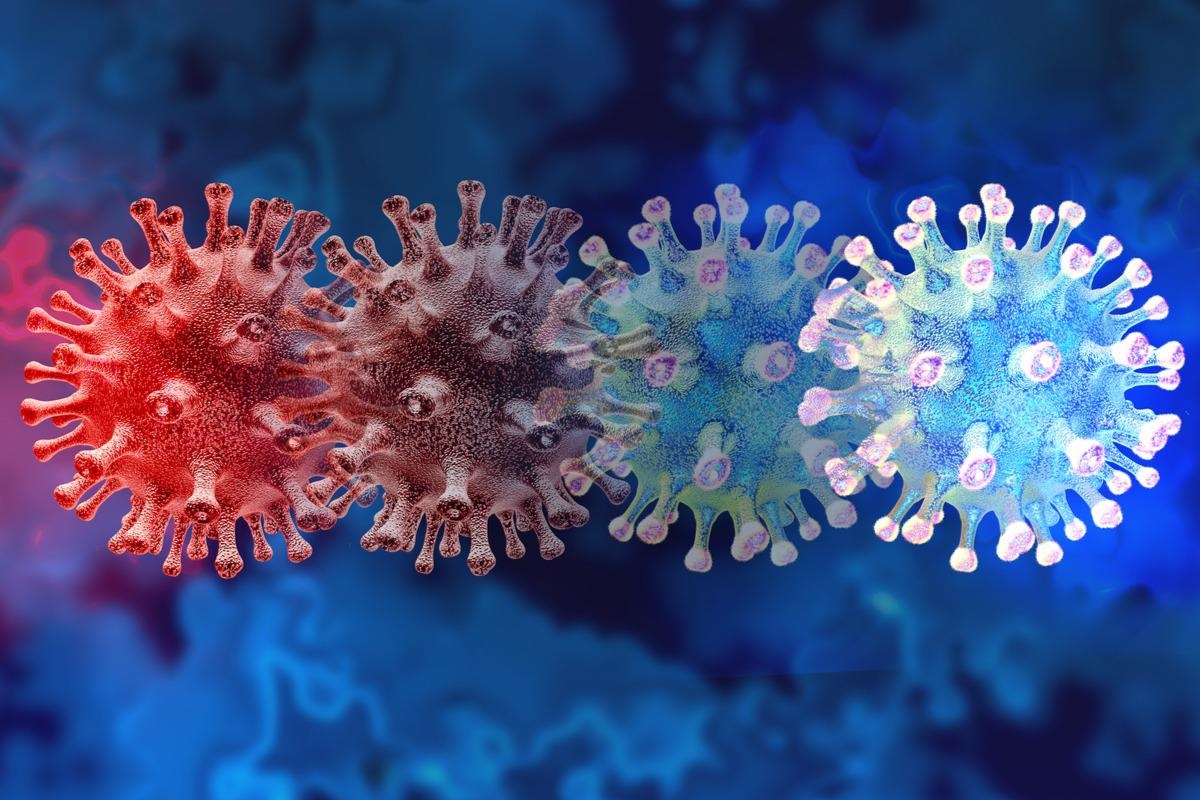They also explored this motif as a therapeutic target for developing broad-spectrum potent fusion inhibitors against human coronaviruses (HCoVs).
 Study: Targeting an evolutionarily conserved “E-L-L” motif in the spike protein to develop a small molecule fusion inhibitor against SARS-CoV-2. Image Credit: Lightspring/Shutterstock
Study: Targeting an evolutionarily conserved “E-L-L” motif in the spike protein to develop a small molecule fusion inhibitor against SARS-CoV-2. Image Credit: Lightspring/Shutterstock

 This news article was a review of a preliminary scientific report that had not undergone peer-review at the time of publication. Since its initial publication, the scientific report has now been peer reviewed and accepted for publication in a Scientific Journal. Links to the preliminary and peer-reviewed reports are available in the Sources section at the bottom of this article. View Sources
This news article was a review of a preliminary scientific report that had not undergone peer-review at the time of publication. Since its initial publication, the scientific report has now been peer reviewed and accepted for publication in a Scientific Journal. Links to the preliminary and peer-reviewed reports are available in the Sources section at the bottom of this article. View Sources
Upon fusion of the SARS-CoV-2 S protein to host cell membranes, viral genomic ribonucleic acid (RNA) is released into the host cells. The S2 subunit comprises the fusion peptide (FP), heptapeptide repeat sequences 1 and 2 (HR1 and HR2) that form a fusion core (6-HB structure) essential for membrane fusion. Thus, drugs inhibiting the HR-1-HR2 interaction-mediated membrane fusion, such as small molecular fusion inhibitors, could enhance COVID-19 therapeutics. However, the development of small molecule fusion inhibitors against HCoVs has been limited.
About the study
In the present study, researchers assessed the importance of the E-L-L motif in stabilizing the 6-HB structure and S-mediated membrane fusion and viral entry and the efficacy of small molecule inhibitors targeted at this motif against SARS-CoV-2 variants.
They used repurposed drugs to identify Food and Drug Administration (FDA)-approved small molecules with HR1-HR2 interaction blocking potential and hence act as a broad-spectrum fusion inhibitor against different SARS-CoV-2 variants. The in silico analysis identified posaconazole, pirenzepine, azimilide, bis(4-methylumbelliferyl)pyrophosphate (BMPP), and homophenazie as efficient small molecule fusion inhibitors.
They analyzed the S protein sequences of all HCoVs including variants of SARS-CoV-2, SARS-CoV, Middle East respiratory syndrome coronavirus (MERS-CoV), OC43, NL63, HKU1, and 229E. They searched databases such as PubChem, DrugBank Online, and Zinc15 and selected 25 potential candidates with stereo-electronic complementarity with the highly conserved “E-L-L” motif.
To identify the drug with the highest 6-HB destabilization activity, they evaluated the drugs’ binding energies and performed molecular docking on which posaconazole was the most effective agent. They evaluated the anti- SARS-CoV-2 efficacy of posaconazole through inhibition of membrane fusion, syncytium formation, and entry of viral genomic ribonucleic acid (RNA) into the host cells. The amount of viral RNA was evaluated by quantitative reverse transcription-polymerase chain reaction (qRT-PCR) assays.
Molecular dynamic (MD) simulations and SARS-CoV-2 S pseudovirus-based reporter assays were performed to evaluate the importance of the “E-L-L” motif in S-mediated membrane fusion with either, wild-type (WT) (E-L-L) or mutant (K-G-G) motif HR2 peptides harboring single, double, or triple mutations. Additionally, the SARS-CoV-2 mNeonGreen (mNG) gene signals were assessed.
Results
HR1-HR2 bis-peptides with single mutations in the HR2 domain showed structural stability comparable to that of the WT. In contrast, the double mutant E1182K-L1186G showed moderately high and the triple mutant E1182K-L1186G-L1193G exhibited significantly higher root mean square deviations (RMSD) and root mean square fluctuation (RMSF) values suggesting that the WT “E-L-L” motif is crucial for HR1-HR2 interactions. Replacing all three residues of the motif resulted in an 85% reduction in reporter activity, confirming that complete integrity of the “E-L-L” motif is crucial for S-mediated entry.
The in silico screening demonstrated that posaconazole interacts with the “E-L-L” motif with the highest affinity (followed by pirenzepine) and efficiently blocked membrane fusion. Interestingly, pseudoviruses harboring “E-L-L” motif mutations were resistant towards posaconazole, confirming (i) the importance of the “E-L-L” motif in viral entry and (ii) high specificity of the drugs towards the “E-L-L” motif mediated membrane fusion. Posaconazole also showed undiminished activity against the beta, kappa, delta, and omicron variants.
Posaconazole interacted with all three residues of the “E-L-L” motif. Posaconazole, in its most stable docked conformation (cluster population of 58), predominantly occupied the hydrophobic groove of the HR1-HR2 domains. Treatment with posaconazole resulted in a dose-dependent decrease in SARS-CoV-2 mNG signal with specific action against the E-L-L motif with more than 90% reduction in reporter gene expressions at a concentration of 10 µM. Its half-effective inhibitory concentration (IC50) was 3.37µM and significantly reduced viral titers at concentrations 8 and 12 µM.
Posaconazole resulted in a gradual decrease in viral RNA with more than 95% reduction at 48 hpi with significant efficacy pre- and post-infection.
To conclude, posaconazole was effective as a prophylactic and therapeutic agent through E-L-L-specific inhibition of membrane fusion and viral genome release into host cells and is equally effective against all key variants. Additionally, the "E-L-L" motif was an ideal target for the development of antiviral drugs against coronaviruses.

 This news article was a review of a preliminary scientific report that had not undergone peer-review at the time of publication. Since its initial publication, the scientific report has now been peer reviewed and accepted for publication in a Scientific Journal. Links to the preliminary and peer-reviewed reports are available in the Sources section at the bottom of this article. View Sources
This news article was a review of a preliminary scientific report that had not undergone peer-review at the time of publication. Since its initial publication, the scientific report has now been peer reviewed and accepted for publication in a Scientific Journal. Links to the preliminary and peer-reviewed reports are available in the Sources section at the bottom of this article. View Sources